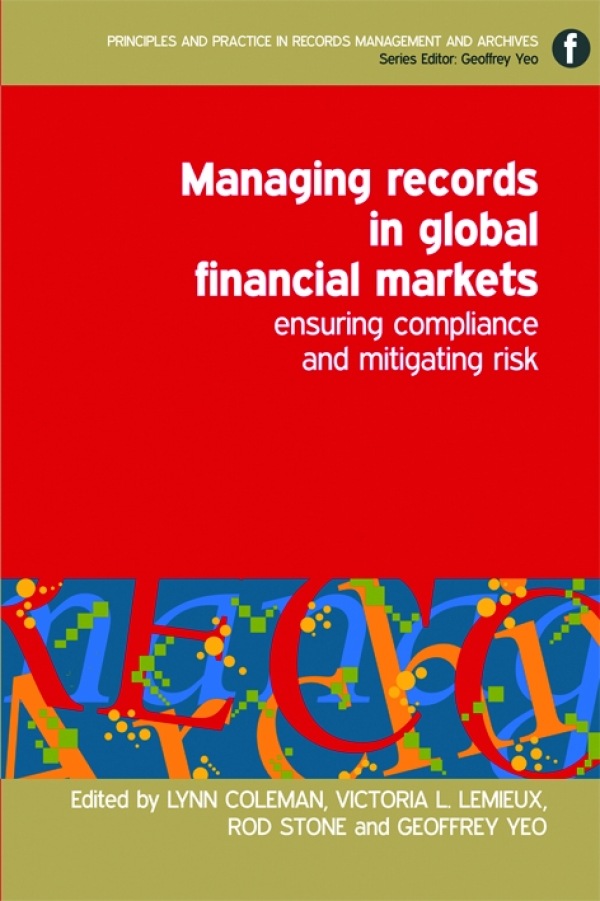Book contents
- Frontmatter
- Contents
- Introduction to the series
- Contributors
- Introduction
- List of abbreviations
- 1 Global financial markets
- Part 1 Regulatory and legal compliance
- Part 2 Balancing risk and return
- 7 Managing records risks in global financial institutions
- 8 The digital revolution and its impact
- 9 Mergers, acquisitions, divestitures and insolvencies
- 10 Records management considerations in global strategic outsourcing
- Part 3 Litigation-related issues
- Part 4 Record-keeping approaches
- Index
9 - Mergers, acquisitions, divestitures and insolvencies
from Part 2 - Balancing risk and return
Published online by Cambridge University Press: 08 June 2018
- Frontmatter
- Contents
- Introduction to the series
- Contributors
- Introduction
- List of abbreviations
- 1 Global financial markets
- Part 1 Regulatory and legal compliance
- Part 2 Balancing risk and return
- 7 Managing records risks in global financial institutions
- 8 The digital revolution and its impact
- 9 Mergers, acquisitions, divestitures and insolvencies
- 10 Records management considerations in global strategic outsourcing
- Part 3 Litigation-related issues
- Part 4 Record-keeping approaches
- Index
Summary
Introduction
From the early 1990s, financial institutions increasingly pursued a strategy of growth by acquisition until 2008, when the consequences of the banking crisis shifted the emphasis to mergers and divestitures in the name of survival. This chapter ref lects the personal experience of the author and that of other senior managers who have been involved in these events from a records management viewpoint. The aim of the chapter is to provide general guidance along with insights into best practice, both for senior executives and for managers more directly responsible for day-to-day records management.
The history of a financial institution can often be traced through multiple mergers and acquisitions, and these continue to occur with increasing frequency. The three main drivers for mergers and acquisitions are:
bull; strategic investment, since acquisition is often the fastest way to penetrate new markets
bull; search for growth in income, where organic growth is perceived as too slow
bull; improved productivity, if the cost base can be reduced by de-duplication of operations.
In the wake of the global recession in 2008, a fourth factor emerged: survival. Financial institutions at risk of insolvency put themselves up for sale to stay in business. A few went into liquidation, and their assets were sold to several buyers.
The main focus of this chapter is on mergers and acquisitions. In all cases, acquiring or merging institutions will need to integrate the records of the assets they have acquired. The process is broadly the same for all mergers and acquisitions, although some key differences need to be recognized. In particular, where an acquired institution becomes a subsidiary with a continuing legal existence, its records need to be held in the name of this separate legal entity.
Executive management has a heavy workload during the early days of integration; it has to be focused on closing the deal, appointing senior managers and creating implementation plans. However, records management is also a core requirement for a successful integration, to ensure that essential legal and regulatory retention and reporting responsibilities can be met.
There are four key decision points in a merger or acquisition; these are set out in Table 9.2. The acquiring institution's records manager should be actively involved as soon as the initial terms have been agreed, which is at the second of these decision points.
- Type
- Chapter
- Information
- Managing Records in Global Financial MarketsEnsuring Compliance and Mitigating Risk, pp. 119 - 132Publisher: FacetPrint publication year: 2011



